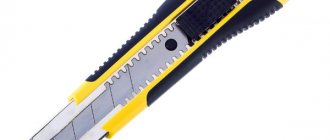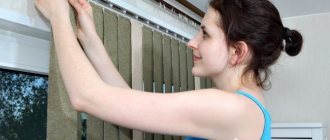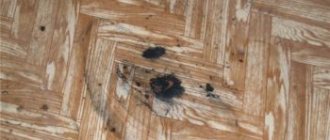Today’s article is devoted to the question of how to remove polyurethane foam from a plastic window. There are many different erroneous options that will not only clear the profile of building material, but also damage its top layer. Therefore, in order not to spoil the appearance of the window frame, we recommend reading this publication to the end: all the effective and safest ways to solve the problem are collected here.
Removing polyurethane foam from a plastic window Source kraski-net.ru
Effective ways to deal with a fresh stain of polyurethane foam
Of course, freshly dripped foam on a window sill or window profile can be easily removed using a construction spatula, simply by prying off the dirt. However, there are times when the remains have time to harden a little. In this case, scraping with sharp objects will only ruin the appearance. Therefore, you can use one of the methods listed below or choose several of them.
Dried foam on a plastic window from the outside Source po-chistim.ru
Hot vegetable oil
It can be olive or sunflower. To prepare the cleaner, follow these steps:
- take a small cauldron and pour one glass of oil into it;
- heat it to boiling temperature;
- then take a clean rag and soak it generously in oil;
- Without wasting time, wipe the contaminated surface of the plastic.
This method is effective. It is absolutely harmless, both for the profile and for humans, because it does not contain chemically hazardous components.
Hot vegetable oil to dissolve fresh foam on the window Source legkovmeste.ru
How to remove foam from hands
To remove dirt from the skin of your hands, do not use strong solvents. Use special products only with extreme caution. After some time, the polyurethane foam will peel off on its own under the influence of sebaceous secretions. Some people use vegetable oil. It will soften the stain, making it easier to remove.
Removing foam from upholstery
Apply the oil for half an hour and then remove the dirt with a soft cloth.
It is more difficult to remove foam from hair. More precisely, it is impossible. The hair will have to be cut or washed with dimescid, which is not recommended from the point of view of collateral damage to the scalp and the effect of this drug on the human body.
Summarize. Work with polyurethane foam wearing protective gloves and a hat to prevent it from getting on your hair. The space around the foam treatment area is covered with mounting tape, film or paper, for example, newspapers. Only by following these recommendations can you save yourself from the above problems.
Polyurethane foam is a long-known and very popular material that is used for all kinds of work. But when using foam, various unforeseen situations often occur when it ends up where it shouldn’t. The peculiarity of this material is that it cannot be easily wiped off. How to remove polyurethane foam from laminate flooring, is it possible to save the floor covering?
When carrying out major renovations in an apartment, sometimes it is impossible to do without some special tools. One of them is ordinary polyurethane foam. It is so multifunctional and easy to use that one can only wonder how they coped with repairs without it before.
Everyone is familiar with polyurethane foam, even those who have never used it in practice. It can protrude from the cracks of houses, is used when installing plastic windows, and is often visible from under the inner lining of garages. In appearance, the frozen yellowish material is very reminiscent of foam plastic. It is quite durable, has a large number of pores, and does not sink in water.
From the point of view of chemistry and construction, polyurethane foam is a polyurethane foam sealant packaged in a container, reminiscent of the packaging of a regular air freshener or a can of spray paint. Inside the cylinder there is directly a liquid prepolymer and a gas that displaces it from the container. When the foam comes out of the can, it polymerizes fairly quickly into rigid polyurethane foam.
Polyurethane foam is a polyurethane foam sealant
The material is widely popular due to its properties:
- perfectly insulates treated surfaces;
- easy to use - just purchase a cylinder and a special gun for the job;
- hardens quickly;
- saves work time;
- not afraid of moisture;
- does not conduct electricity;
- has excellent adhesion to any surface;
- penetrates well even into small cracks and gaps;
- can be used in professional construction and for minor installation work.
On a note!
Previously, tow and cement were used instead of foam, which in comparison are quite difficult to work with. The cement required preparation and took a long time to dry, which resulted in long installation times.
Polyurethane foam is ideal for sealing all kinds of joints and seams, moreover, between almost any materials. It is also used for assembling a wide variety of structures made of plastic, wood, and metal. Foam does not work only with the following types of coatings - Teflon, polyethylene, silicone. In general, the options for using polyurethane foam can be very different; it is enough to know how to use it - the final result will depend on following the technology for working with it.
Aspects of using polyurethane foam:
- work is carried out only at air temperatures from +5 to +30 degrees;
- working with the material requires gloves;
- the optimal width of the cracks for sealing should be in the range from 1 to 8 cm;
- Before work, the gaps are treated with water - the humidity of the treated surface should be 60-80%. This will affect the quality and speed of polymerization;
- Before starting work, shake the container well;
- The time for complete hardening of the foam is about 8 hours.
On a note!
Foam does not like exposure to ultraviolet radiation, so it is better to hide it from sunlight with a layer of putty, plaster or casing.
Due to all the properties described above, foam is quite difficult to remove from various surfaces. Therefore, you need to be careful when working with it.
Polyurethane foams "TechnoNIKOL"
Dried sealant: how to deal with it
It is more difficult to remove polyurethane foam that has got onto the PVC window profile and has already existed there for some period. Then the above methods are unlikely to help cope with the task. Therefore, we move on to more radical cleaning options.
"Demexide"
“Demexide” is a pharmaceutical drug familiar to everyone, and it should be used only in the manner described in the instructions below:
- take a sharp paint knife and carefully remove the top part of the dried sealant;
- moisten a cotton pad or just a piece of cotton wool generously with Demexide;
- then diligently rub the area where there is contamination with sealant;
- Place the cotton pad on the stained area and leave it on it for 10-15 minutes.
Using dimexide to clean polyurethane foam on windows Source odstroy.ru
This period is more than enough to dissolve the remaining congealed dirt. Now simply rinse the area as usual.
Note! If the surface of the window frame is varnished, do not use this drug. It is capable of removing part of the top layer of coating along with the hardened foam. In the future, this place will be noticeable, as a stain will form on it.
Professional cleaner for removing polyurethane foam from plastic windows Source luxury-house.org
Special cleaning liquid
Construction stores sell a special liquid that can remove gun foam contamination. It dissolves all the pieces and the instrument becomes like new again. There are even kits on sale: sealant plus cleaner. You need to use this to clean the PVC frame according to the following algorithm:
- take a pure white rag or napkin and soak it in foam remover;
- then apply to the dried piece of foam and hold in this position for 5-10 minutes;
- if the sealant is on a vertical surface, glue the rags with masking tape;
- After time has passed, simply remove any remaining dirt.
You don’t have to leave the rag in the product on the surface of the profile; it may be enough to just wipe the coating thoroughly.
Important! Cleaning liquid for polyurethane foam should be applied using only a white, non-dyed cloth. Otherwise, you risk leaving pigment from a rag or napkin on the profile. And it will be more difficult to remove than polyurethane foam, especially if the frame is matte.
Adviсe
So that you don’t have to struggle with cleaning and rack your brains about how to wash foam from a metal door, you should familiarize yourself with useful tips from professionals.
Before application, the foam can should be heated in hot water.
Shake thoroughly to ensure that the propellant gas and prepolymer are well mixed.
Connect a gun or tube to the can.
Clean the surface from dust in advance and lightly moisten it.
Apply gradually, squeezing out the composition in small portions.
It is better to purchase professional cylinders equipped with a metering valve.
In the absence of skills and high-quality tools, it is better to entrust the work to specialists.
Special equipment
There are a lot of expensive compounds that can remove both fresh and hardened polyurethane foam on a window profile. Just be sure to read the instructions before using them. Since the compositions may not be suitable for use on colored PVC frames.
Special branded cleaner for polyurethane foam Source krsk.au.ru
When a suitable liquid has been selected, the principle of its use is no different from those listed above. Only with the help of a special product will it be much faster to deal with the sealant.
How to secure laminate flooring
Laminate and polyurethane foam are incompatible, however, these materials may accidentally “meet” during apartment renovation. Foam can easily get on the floor covering, and it can’t be easily removed. That is why the laminate should be made as safe as possible before starting work:
- the laminate can be covered with cardboard or polyethylene;
- You need to work carefully and carefully, trying to avoid getting polyurethane foam on the floor.
However, in any case, no matter how much you cover the coating before starting repairs, it is quite easy to get it dirty. And cleaning laminate flooring after finishing renovation work is not the easiest task.
The first step is to remove large-sized debris; however, you cannot drag pieces of cement or bricks over the surface. You need to carry them, holding them suspended above the laminate, otherwise you can easily scratch the surface. Then, use a broom or brush to carefully sweep away smaller debris and throw it away. The easiest way to collect construction dust is with a vacuum cleaner.
Only after completing the previous list of works can you begin to remove stains from all kinds of construction compounds - glue, cement, paint, as well as polyurethane foam.
What to do if polyurethane foam gets on the window glass
It is possible that contaminants, in particular polyurethane foam, may get on the glass. Even if you try to remove them right away, stains will remain one way or another. In this case, the following algorithm of actions comes to the rescue:
- Take a small piece of cotton wool and soak it in any of the solvents: White Spirit, acetone and others.
- Rub the surface of the dirty glass: after which the residue will be completely removed.
- You can try to remove the sealant dry: to do this, cut off the main part of the drop, and then scrape off the remains with a blade, just do not scratch the glass.
For such cleaning, it is recommended to use a special glass tool. It consists of a blade with a handle and limiters. It is safe to work with them, because no matter how you tilt the tool, it will be impossible to scratch the glass.
We clean plastic windows and doors from foam
Even with high-quality installation of plastic products, stains on wood jambs, glass and window sills cannot be avoided. It is impossible to remove the mixture from polyurethane foam using chemicals.
You need to remove dirt from plastic as follows:
- Scrape off the fresh grout with a piece of wood or a spatula. If the plastic surface is flat, then there will be no mark left on it.
- If you don’t know what is the best way to clean old polyurethane foam, then cut off the top layer of the mixture with a knife, and then apply warm sunflower oil for 15 minutes. This will soften the dried material. At the end, you can remove the remaining foam using a sponge with an abrasive surface.
- We use a pharmaceutical product - Dimexide gel. It perfectly removes dried grout, even stains that are a year old. It has a low price, so it is profitable to use. Wear gloves before working. Apply the gel to the stain with a brush and distribute it evenly. In 5 min. Remaining foam is removed with a sponge.
Products that are prohibited from cleaning polyurethane foam on PVC windows
In general, a large number of compounds and tools are offered for cleaning windows. But not all of them are safe. This section lists tools and products that are strictly prohibited to use for cleaning foam on plastic profiles. Here they are:
- an abrasive kitchen sponge (its hard side will only scratch the coating, which means dirt will penetrate deeper into the plastic layer);
- metal brushes have the same effect as the previous item on the integrity of the surface;
- cleaning products based on soda and rough parts resembling fine sand. They, in turn, do grinding, accordingly the profile will lose its glossy appearance and become matte;
- solvents No. 646 and No. 647. The proposed compositions also dissolve the top coating of the plastic window along with the frozen foam.
Features of laminate cleaning
Laminate is one of the popular materials for flooring. It consists of several layers, the topmost one - protective - is represented by melamine resin. The material does not like moisture, but in general it is not fussy about care and is easy to clean. But if the laminate is not properly cared for, the coating becomes dull, becomes stained, begins to bulge, etc. Therefore, you need to care for the material correctly.
Laminate cannot be:
- treat with aggressive chemicals
- they can irreversibly damage the coating and leave stains on it. Such substances include alkalis, acids, chlorine-containing agents and ammonia;
Attention!
Before using any laminate floor cleaner, you should first test it on a small area of the surface and only then use it on the entire surface.
- clean using abrasives and mechanical cleaning
. These methods can damage the protective layer of the coating and quickly render it unusable; - wash without first removing sand and small stones
(these items can act as natural abrasives and ruin the laminate); - treat with products intended for parquet
that contain silicone; - excessively wet with water
- water is destructive for this type of coating (with the exception of moisture-resistant laminate).
We use the freezer
Since the polyurethane composition has good contact with fabrics, washing off foam from clothing with water and soap solution will be ineffective. If there are foam splashes left on things, you should use the freezing method. To do this, clothes with traces of sealant are placed in a plastic bag and left in the freezer for 60 minutes. Take out the bag and remove the frozen remains of the sealant from the fabric.
How to remove polyurethane foam from clothes, if there are stains left, remove them with a stain remover. After treatment, clothes need to be washed; you can use a product for delicate fabrics. The stain remover effectively removes marks from clothing, but it is better to check the reaction of the fabric to the composition used in an inconspicuous place.
Rules for removal from laminate and floor coverings
Dimexide is used to remove stains from linoleum, laminate, wood, and parquet. Do not use acetone on flooring as it may cause streaks.
To remove dirt from a carpet or rug, place a damp cloth on the contaminated area and wait until the foam is completely soaked. After softening, the stain is removed with a sponge soaked in a soap solution.
Use store-bought products. If they don’t help, use less gentle methods: sandpaper treatment, disc grinding.
Features of removing traces from various areas of the window structure
The approach to removing polyurethane foam from windows must take into account which surface the contamination is on. Depending on the type of material, the cleaning approach is adjusted.
Glass
It is better to remove the sealant from the glass after it has hardened . The main mass is carefully cut off, avoiding scratching the glass.
Windowsill
The sill of plastic windows can be made of ceramics, plastic or wood. For PVC surfaces, treatment with Dimexide and special polyurethane foam solvents is suitable. Stone-like ceramic window sills can be cleaned with any of the household and professional products.
But if the surface is wooden and varnished, the use of such products is prohibited. In this case, foam removal must be carried out when the polyurethane has just begun to set. Its edge is picked up and carefully removed. To make the procedure easy, it is advisable to wait until the sealant has stopped getting dirty, but has not yet hardened.
If the foam has frozen on a varnished window sill,
you will have to use a salt solution:
- Pour a glass of water into a bowl.
- Add 1 tbsp. l. salt.
- Stir.
- The solution is applied to the affected area of the window sill.
- Leave for 5 minutes.
- Erase the mark with a wet sponge.
If all the above methods do not help clean the varnished surface, you will have to sand the window sill and re-varnish it.
Plastic
It is recommended to clean the plastic at the joints after the polyurethane mass has hardened. It is better to scrape it off with a plastic spatula rather than a metal one. Further processing can be carried out with Dimexide or sunflower oil.
Cleaning hard surfaces
No matter how carefully the work is carried out, occasional splashes and excess foam always end up on nearby surfaces. It is better to remove stains immediately: fresh polyurethane foam is more pliable and does not require the use of caustic solvents.
Procedure:
- Remove the top layer of foam with a wooden spatula or rag. It is also easy to assemble with a plastic bag or cling film - it sticks to them best. If the foam is already dry, use a sharp knife.
- Treat the remaining adhesive mass with a special cleaner, dimexide (pharmaceutical), white spirit, acetone or nail polish remover.
- Rub the stained area with a hard surface sponge.
In this way, you can easily clean plastic windows, enamel surfaces, tiles, and metal doors from polyurethane foam. If there are no solvents in the house, the mechanical method remains. You can try to scrub the stain with a plastic scraper or a hard sponge using cleaning products.
Cleaning delicate materials
Particular care should be taken when removing polyurethane foam from floors, varnished and laminated objects. Linoleum, laminate and other delicate surfaces may lose color or become deformed from the use of strong solvents. Here it is better to use other methods:
- Mechanical cleaning. Wait until the foam dries a little and stops sticking to your hands (2-4 hours). Grasp its edge and smoothly pull it towards you.
- Using oil. Cut off the foamy top at the root and generously pour sunflower oil over the sticky remains. Now they can be easily wiped off with a stiff brush or sponge.
- Removing dried foam from laminate and linoleum. If 8 hours have passed since the foam sealant hit the floor, all that remains is to cut it off. Remaining dirt should be covered with wet rags. After 20–30 minutes they will get a little wet and will be easier to wipe off.
Many special fresh foam cleaners are suitable for processing plastic, laminate, linoleum, MDF. They impregnate a napkin or cloth and spot remove dirt.











